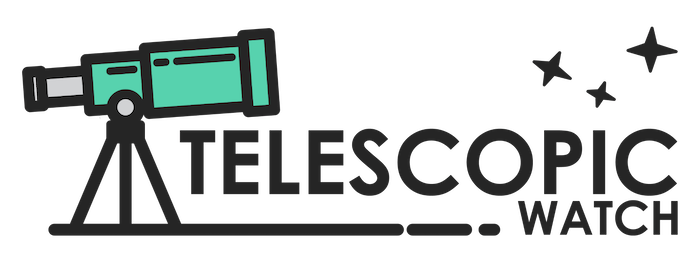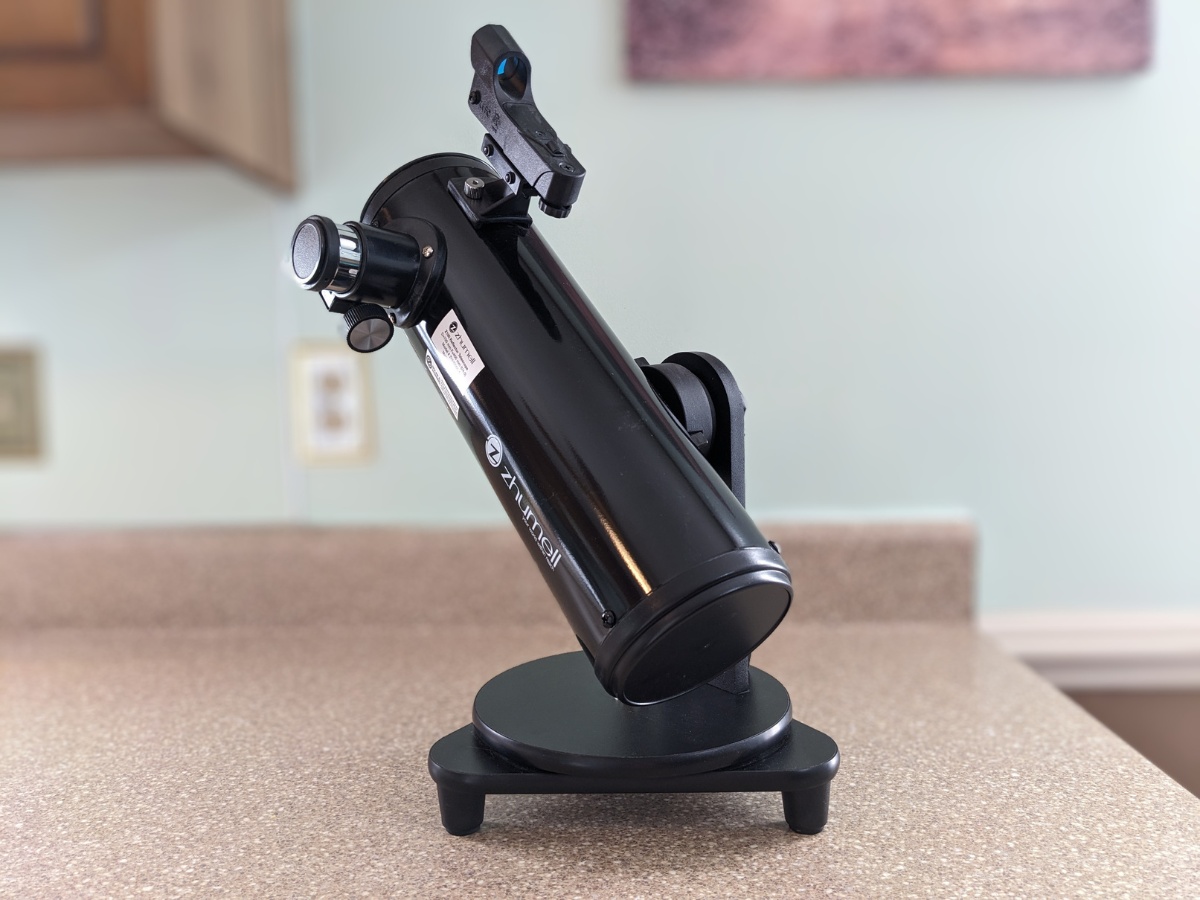The Z100’s Newtonian Reflector Optics
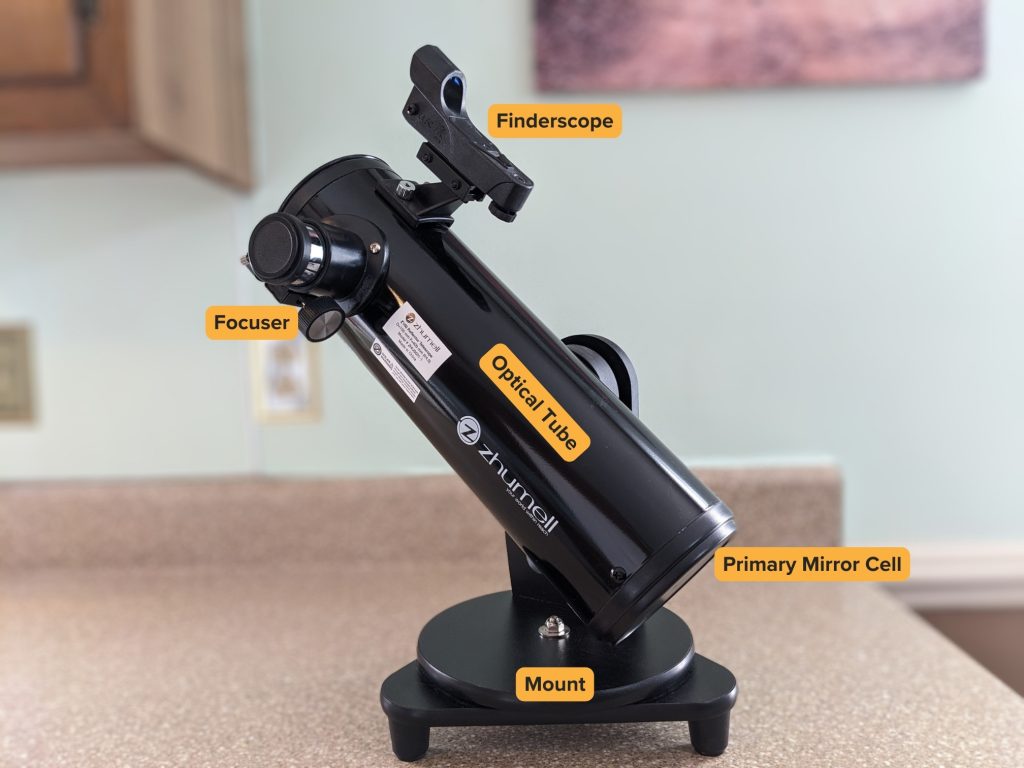
The Z100 is a 100mm (3.93”) Newtonian reflector with a focal ratio of f/4. At such a fast focal ratio, you’d expect there to be some coma. But it’s not noticeable with the stock 17mm and 10mm eyepieces. With a lower-magnification eyepiece like a 25mm Plossl, I start to spot it at the edges of the field of view.
The Z100’s focuser is a 1.25” rack-and-pinion consisting partially of plastic. I find it works adequately.
The Tricky Collimation Aspect
At a focal ratio such as f/4, precise collimation is critical for optimal performance with any reflector. Unfortunately, the folks at Zhumell have declined to offer this crucial feature, and the primary mirror sits in a static, non-collimatable cell.
The scope keeps its collimation pretty well over time, which is good. But the lack of adjustments is, to say the least, a bit of a worry. Also, I know firsthand that Zhumell won’t be able to help you much if your scope is out of collimation and needs to be replaced or fixed.
The Z100’s secondary mirror is collimatable, but you shouldn’t ever need to touch it.
The Accessories
The Z100 comes with two eyepieces: a 17mm Kellner (24x) and a 10mm Kellner (40x).
Even though the eyepieces don’t have rubber eyecups, which I find annoying, these eyepieces are good. They are made entirely of metal and glass, with no plastic, unlike the eyepieces that come with many similarly priced telescopes that I’ve personally tested. The 10mm, however, has a short eye relief, and its short length may cause your nose to bump into the telescope when you look through it.
The Z100’s wide field of view at low power (over 2 degrees with the stock 17mm and up to 4 degrees with optional lower power/wider field oculars) makes it extremely easy to find deep-sky objects with little in the way of practice.
Theoretically, the scope could handle up to 150–200x magnification, but I find that the mount is a little annoying to use above 100x or so, and the optics max out at around 150x from my experience.
The most crucial additional accessory I would recommend for this scope would be a 6mm “gold-line” eyepiece or a 2x Barlow lens.
The 6mm Goldline gives you 66x magnification, which lets you see planets better than the stock 10mm Kellner, which only gives you 40x.
Alternatively, the 2x Barlow coupled with the stock 10mm eyepiece provides 80x.
If you can only pick one, I would recommend the 6mm Goldline. But if you’re able to buy both, you could also buy Barlow with the 6mm eyepiece for an astounding 133x, which is about the practical limit of what this telescope can provide.
The Z100 also includes a standard red dot sight, which works just fine for this telescope.
The Z100’s Tabletop Dobsonian Mount
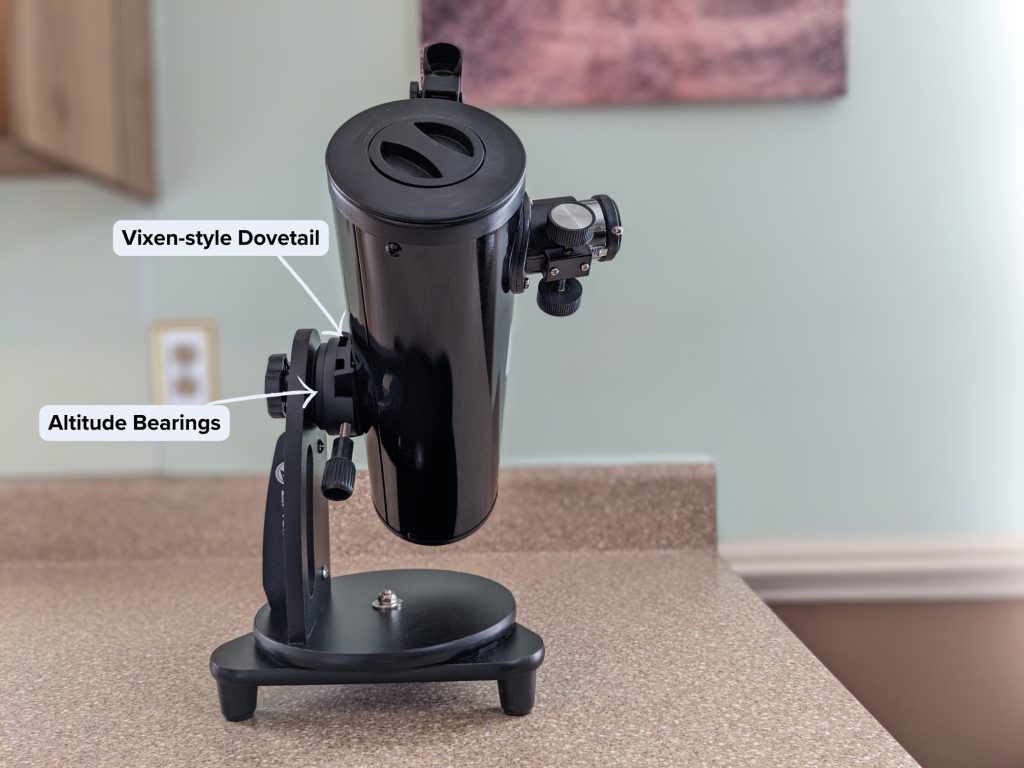
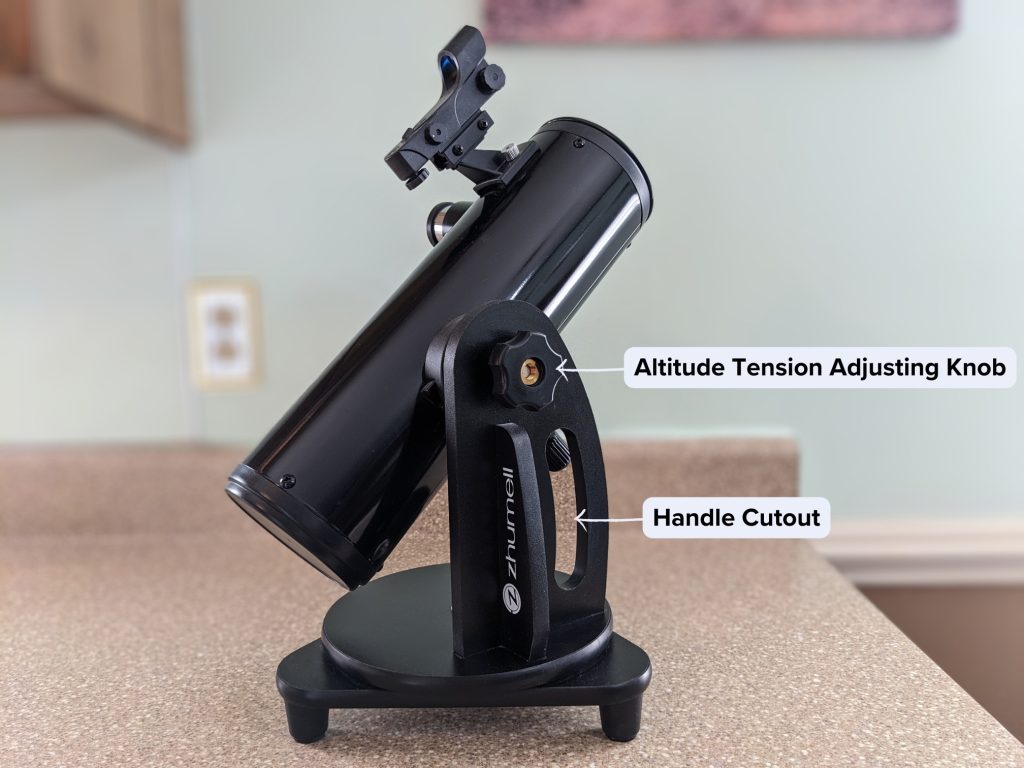
The Z100 comes on a fairly utilitarian tabletop Dobsonian mount, which it attaches to via a plastic Vixen dovetail saddle. The altitude bearing is not of the conventional Dobsonian design but works nonetheless. Additionally, the mount has a small cutout for use as a handle.
I’ve found that the mount is made mostly of particleboardwith some sort of laminate glued on, but the azimuth bearings are in fact real Teflon pads.
If you don’t have a sturdy enough table or bar stool to set the Z100 on, the bottom of the mount has a ¼ 20 threaded hole, so you can attach it to most photo tripods. You can also set the scope on the hood of your car, which is arguably a more stable option than a lot of cheap tripods or folding tables.
Alternative Recommendations
If you’re willing to spend more, here are a few of our picks at higher price brackets:
The Sky-Watcher Heritage 150P and the smaller 130P both deliver significantly more aperture, and thus better performance, than the Z100 or larger 114mm tabletop reflectors, but in a similarly compact, convenient, and portable package.
Aftermarket Accessory Recommendations
The Z100 is a great scope, but if you have the budget for accessories at the same time as your purchase we’d recommend you consider the larger Z114 or the Sky-Watcher Heritage 130P instead, as their larger apertures will provide far more of an improvement in views than any aftermarket eyepiece or filter. However, we’ve provided some options here for your convenience.
The stock 17mm Kellner is perfectly adequate for low-power sweeping with the Z100, though it does not maximise the attainable field of view with a 1.25” eyepiece. Unfortunately, the Z100’s f/4 focal ratio means that a 32mm Plossl eyepiece is not ideal, as it will provide too low of a magnification. A 25mm Plossl (16x) provides a lower magnification and wider field than the 17mm Kellner, but the background sky may be too bright for it to be of any real use if you are under light-polluted skies and it will show a lot of coma towards the edges of the field of view.
On the other hand, acquiring a 6mm redline/goldline eyepiece is essential for high-magnification views with the Z100, as the stock 10mm eyepiece only delivers 40x magnification. The 67x provided by a 6mm ocular is at the low end of what is considered to be a useful magnification for observing Mars, Jupiter, and Saturn. A 2x Barlow lens for 133x, or a 4mm planetary eyepiece for 100x, is even better; the Z100 can nominally handle up to 200x magnification but in practice 140x-150x or so is the most that is actually effective to use.
Though undoubtedly quite an expensive purchase for such a small telescope, a UHC/OIII nebula filter can considerably improve your viewing experience of nebulae, most notably the Orion Nebula, when used with the Zhumell Z100. This filter, when paired with the 80AZ under dark skies, allows you to observe vast nebulae like the North America or Veil Nebula, and it’ll transfer over to larger and more powerful telescopes in the future as well.
